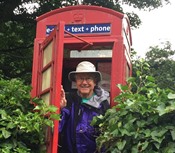Developments in the Historical Evolution of Medical Physics: Radiation Therapy Dose Fractionation and Ultrasound Imaging
C Orton1*, F Duck2*, L Rothenberg3*, C Ling4*, (1) Wayne State University, The Villages, FL, (2) University of Bath and Royal United Hospital, Bath, ,GB, (3) Memorial Sloan-Kettering Cancer Center, New York, NY, (4) Varian Medical Systems, Palo Alto, CA
Presentations
TU-E-206-0 (Tuesday, 7/12/2022) 11:00 AM - 12:15 PM [Eastern Time (GMT-4)]
Room 206
The Symposium reviews the historical evolution of two major topics in the field of medical physics and related professions and the extensive contributions of two medical physics pioneers.
•The Evolution of Radiation Therapy Dose Fractionation
Since the first radiotherapy treatments in 1896, typical fractionation schemes have gone through several phases:
· 1896-1915: extreme hyperfractionation, with as many as 100 fractions
· 1915-1935: two Schools of Thought--either extreme hypofractionation with just a single fraction or 25-40 fractions.
· 1935-2015: the fractionation proponents won out and 25-30 fractions became “standard fractionation” with occasional clinical trials of hypofractionation, hyperfractionation, and accelerated fractionation.
· 2015-: increased use of hypofractionation.
The physical, clinical, and radiobiological rationales driving these phases will be reviewed.
•IOMP and a Historical Perspective of Medical Ultrasound
The IOMP project on the history of medical ultrasound celebrates the physicists and engineers who pioneered its development. This presentation summarizes the nine articles in two ultrasound historical Special Issues of the Medical Physics International (MPI-Journal), led by Francis Duck. The ultrasonic pulse-echo technique was created by the French physicist Paul Langevin in 1917 for U-boat detection. In 2022 we celebrate the 150th anniversary of his birth. The MPI articles report on the subsequent expansion of ultrasound as a scientific discipline, the development of ultrasonic metrology and to ultrasonic therapy in 1939. Further articles report on diagnostic methods from the 1950s.
•Edith Hinckley Quimby (1891-1982)
Edith Quimby was born in Rockford, IL in 1891. She graduated from Whitman College in Walla Walla, WA with a B.S. in 1913, and then obtained a masters degree from the University of California at Berkeley. Later in her career, after many significant achievements, Quimby was awarded honorary doctorates by Whitman College and Rutgers University. Edith Quimby was hired by Giacchino Failla as a radiation physicist at Memorial Hospital for Cancer in New York City. Failla had studied with Madame Curie and obtained his doctoral degree in her laboratory. After many groundbreaking medical physics studies from 1919 until 1942, they both moved to Columbia University. Dr. Quimby developed a widely employed dosimetry system for single plane implants with radium and radon seeds, and a dosimetry methodology for internal radionuclides. She was author of more than 75 scientific publications, and of significant textbooks including the first comprehensive physics textbook for radiologists “Physical Foundations of Radiology”, which was co-authored with Otto Glasser, Lauriston Taylor and James Weatherwax in the first edition, with Russell Morgan added for the second edition and Paul Goodwin for the fourth edition. With Sergei Feitelberg, M.D. she published two editions of “Radioactive Isotopes in Medicine and Biology: Basic Physics and Instrumentation” . Quimby became a renowned examiner for the American Board of Radiology when the third ABR examination, given in 1936, added physics. She served as President of the American Radium Society, received the RSNA Gold Medal, and numerous prestigious awards given to women in science. Edith Quimby was a Charter Member of AAPM. The AAPM Lifetime Achievement Award was renamed the Edith H. Quimby Lifetime Achievement Award in her honor in 2011.
•Edward R Epp, PhD.
Dr. Epp was Professor Emeritus, Harvard University, and Head of Radiation Biophysics at MGH, passed away on 11/29/2021. Born 7/21/1929 in Saskatoon, Saskatchewan, he obtained his M.A. High Honors from the University of Saskatchewan, and his PhD in Nuclear Physics from McGill University in 1955. He worked at MSKCC 1957-1974, then at MGH and Harvard, until his retirement in 1997. His research interests included radiation physics and dosimetry, radiation biophysics and mechanisms of radiation action on living cells. He was a Fellow of APS and AAPM, the President of Radiation Research Society, and committee member of the NAS and the NCI. He was also the Failla Lecturer of RAMPS. His lifelong interest in chess earned him the title of National Master by the USA Chess Federation.
Learning Objectives:
1.Understand the evolution of the methods and models for Dose Fractionation.
2.Appreciate the extensive range of innovations and developments in medical ultrasound.
3.Recognize the contributions of Edith Quimby to the profession of medical physics.
4.Recognize the contributions of Edward R Epp to the profession of medical physics.
Handouts
- 175-64714-16361659-183734-1595352537.pdf (Colin Orton)
- 175-66996-16361659-195242-1170076307.pdf (Francis Duck)
Keywords
Not Applicable / None Entered.
Taxonomy
Not Applicable / None Entered.
Contact Email










